Once upon a very long time ago, WED Enterprises – then Imagineering – was quite literally a studio, churning with the development of brand new stories and characters and settings. From that mindset sprang forth Disneyland and EPCOT and Animal Kingdom, and Figment, and Pirates, and Haunted Mansion, and Big Thunder Mountain, and Expedition Everest, and New Tomorrowland, and Mystic Manor…
But having spent 1,000 words exploring Disney’s 21st century expansion into a content empire – and a damned successful one at that – is it really any surprise to imagine that a very different way of using Imagineers and of positioning the parks has become the standard? Where once Imagineering created and used the parks as their medium – just as expertly as animators wielded the film medium – we now see a shift…
2. Imagineering curates; the Parks are showplaces
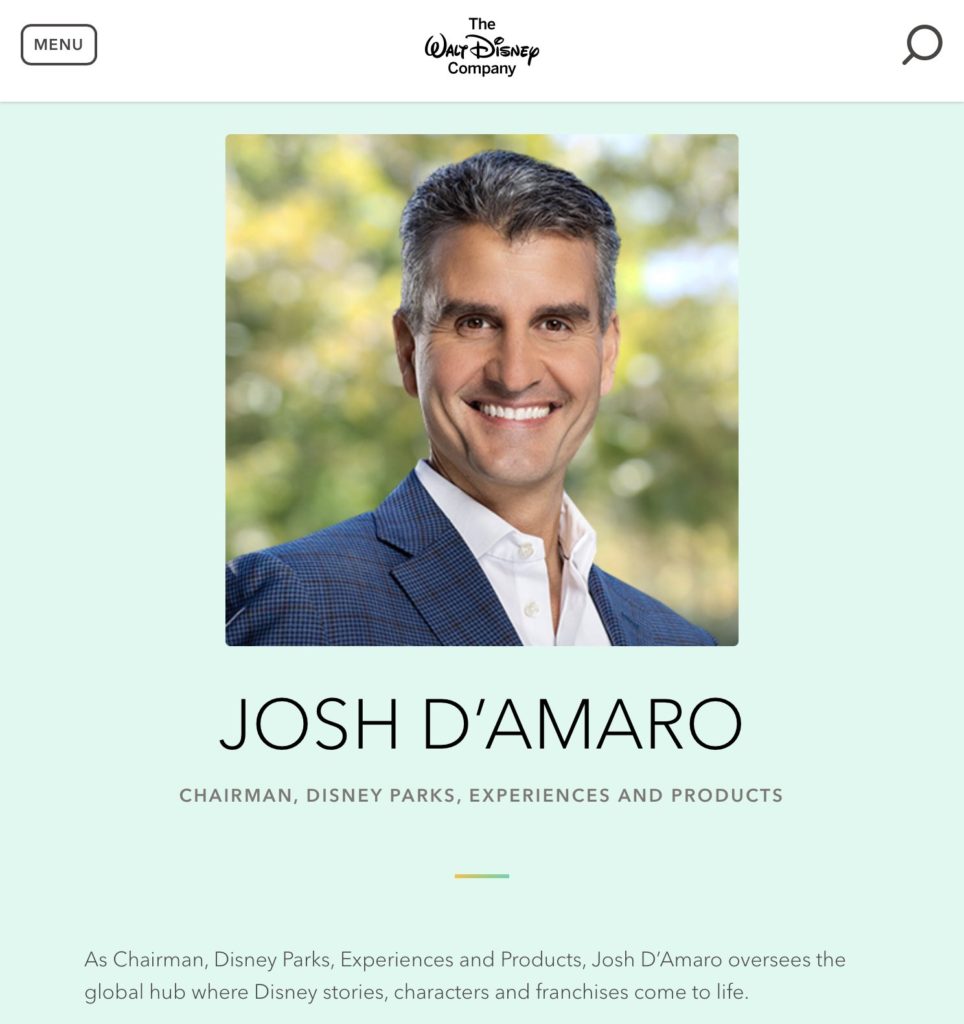
Bob Chapek’s surprise ascension to Disney’s CEO role in 2020 saw the Parks, Experiences, and Products chairmanship passed to “fan-favorite” Josh D’Amaro, the very-forward-facing figure who’d served fleeting stints as Vice President of Animal Kingdom, President of Disneyland Resort, and ultimately, President of Walt Disney World Resort.
Long positioned by fans as a positive force in the division (insofar as being a handsome, well-spoken, accessible nice guy who was regularly actually seen in the parks as opposed to Chapek’s logistical, product-based background), D’Amaro’s ascent was largely seen as a relief. (D’Amaro also benefitted from the elevated Chapek’s unique “scapegoat magnetism.” In other words, as Chapek ascended to the CEO role, so did blame for day-to-day policies and budget decisions at the parks that Iger never would’ve bore the online brunt of. Instead, D’Amaro was conveniently cast as a would-be hero who would certainly restore those evaporating guest perks and undo the countless post-pandemic upcharges that consumed the division he oversaw if only the evil Chapek would let him. Well, shucks!)
On Twitter, MadnessKingdom was the first to note that under D’Amaro, The Walt Disney Company’s own website cites the parks as “…the global hub where Disney stories, characters, and franchises come to life” (see D’Amaro’s bio, above). This simple sentiment perhaps reveals a lot. It suggests, for example, that to leaderships’ thinking, Disney Parks’ primary purpose in the Walt Disney Company is to be what we might call a “showplace” or, put less kindly, a “brand loyalty center.”
This is not an evil or nefarious or inherently wrong positioning of what Disney Parks could be… but one could sure argue it’s a bad, short-sighted, and historically ignorant one…
And following MadnessKingdom’s thread, therein lies the devastating difference in viewpoint. At least in part and at least in its public pronouncement of the Parks’ purpose, Disney Parks are not content themselves, but a content delivery tool; a way to connect guests to the company’s IP just like streaming services, theaters, and consumer products.
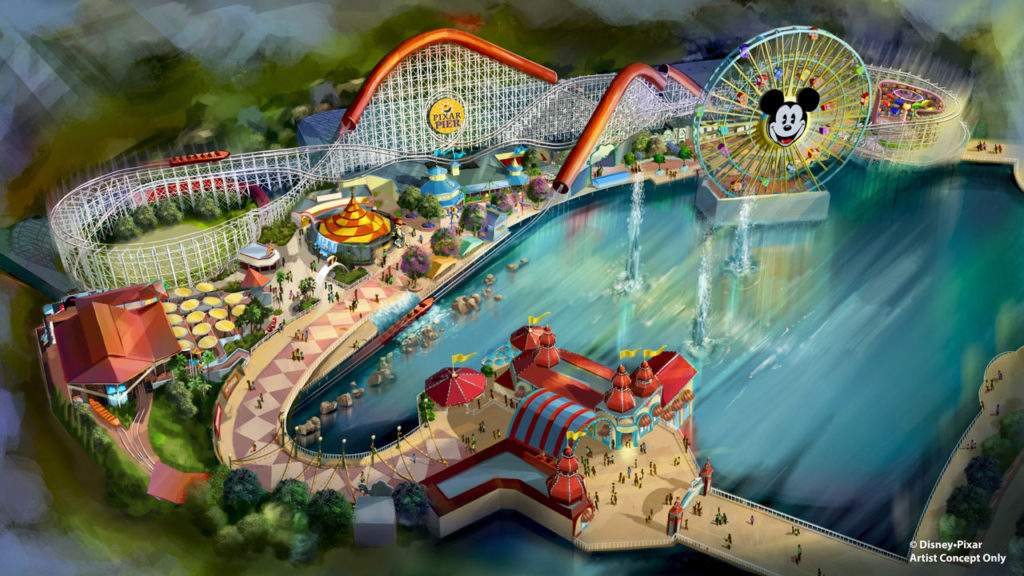
One could surmise that Disney itself sees the Parks positioned not as a spigot from which stories and characters, but as a bucket for receiving stories and characters. With a twist of each respective valve, Disney + Pixar + Marvel + Star Wars dutifully pour into the Disney Parks bucket just as they do the Disney+ bucket, the Disney Channel bucket, the ShopDisney bucket, the McDonald’s promotion bucket, or the Hulu bucket.
Truly think about what a distinction that is… If Disney Parks are buckets whose primary purpose is mere to catch #content generated from elsewhere in the company, then Imagineers are not content creators, but content curators, receiving IP from elsewhere (Disney Animation, Pixar, ABC, Marvel Studios, Lucasfilm) and trying dutifully to fit it into the theme parks they are charged with arranging like art galleries.
Kinks in the plumbing
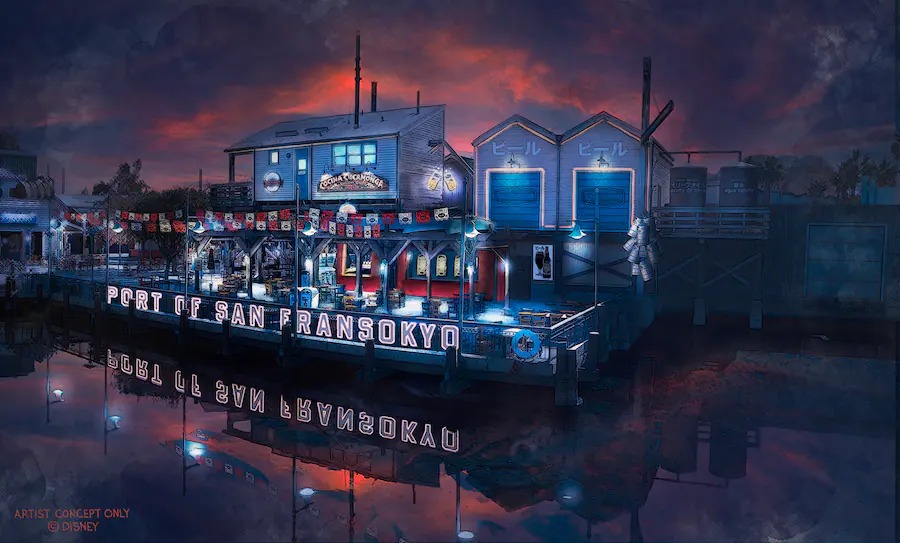
Viewing Disney Parks’ ultimate, collective Theme and purpose as being “a global hub where Disney stories, characters, and franchises come to life” is staggeringly short-sighted… And yet, our recent look at each park’s last wholly-original, IP-free headlining attraction suggests that that’s exactly what’s happened. Today, it’s hard to cast many Disney Parks as anything but elaborate “brand loyalty centers,” meant to turn Disney, Pixar, Marvel, and Star Wars into three dimensional products too big to be delivered by ShopDisney.
Don’t misunderstand – arguably recast from content creators to content curators, Imagineers surely try to divert the content flowing from Disney, Pixar, Marvel, and Star Wars spigots and overflowing from the Disney Parks “bucket” into parks of “best fit.” But of course, it’s one of a thousand elements they balance, including capacity needs, attendance projections, investment cycles, future planning, licensing, budgeting, guest satisfaction, research and evaluation, inclusivity, physical space, and more…
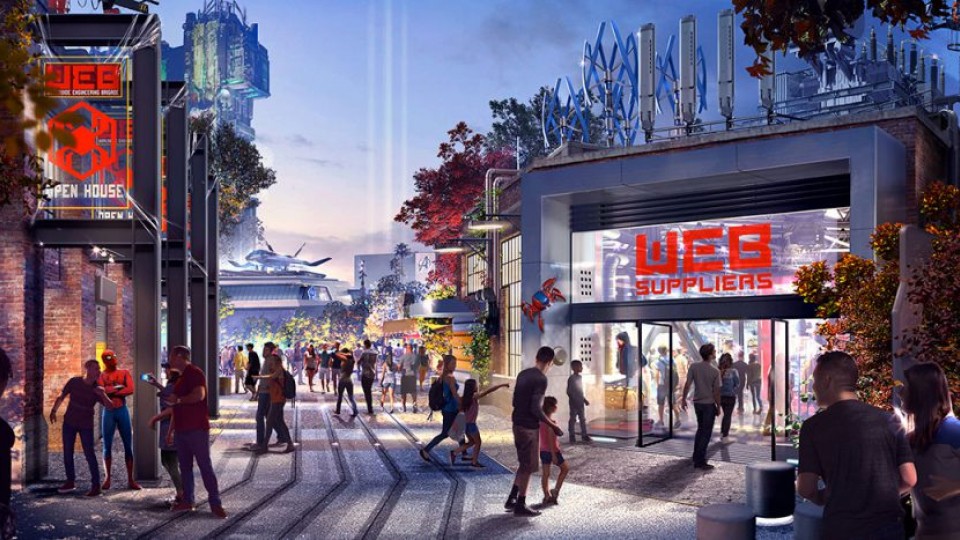
The result, ten years on, is that the deluge of Disney, Pixar, Marvel, Star Wars, and more has led to increasingly identity-lite Disney Parks that don’t have a whole lot to say for themselves; where a Zootopia land feels as likely to be announced for Animal Kingdom as it does Hollywood Studios; where Frozen and Guardians of the Galaxy are plugged into, of all things, EPCOT; where Anna and Elsa, Buzz and Woody, Mike and Sulley, Ariel, and Spider-Man can be found vacationing in the Golden State at Disney California Adventure.
Just as we explored the “Pixarification” of Disney Parks in a standalone Special Feature, Disney’s rush to incorporate fresh content and characters into its parks has been rapid fire, rushed, and often reactive. As content-based expansions dilute each park’s unique theme, it begins to get difficult to tell a park’s theme from its ride lineup. (Who, after all, would see a park with rides dedicated to Frozen, Ratatouille, Guardians of the Galaxy, and Moana and think – oh, EPCOT!)
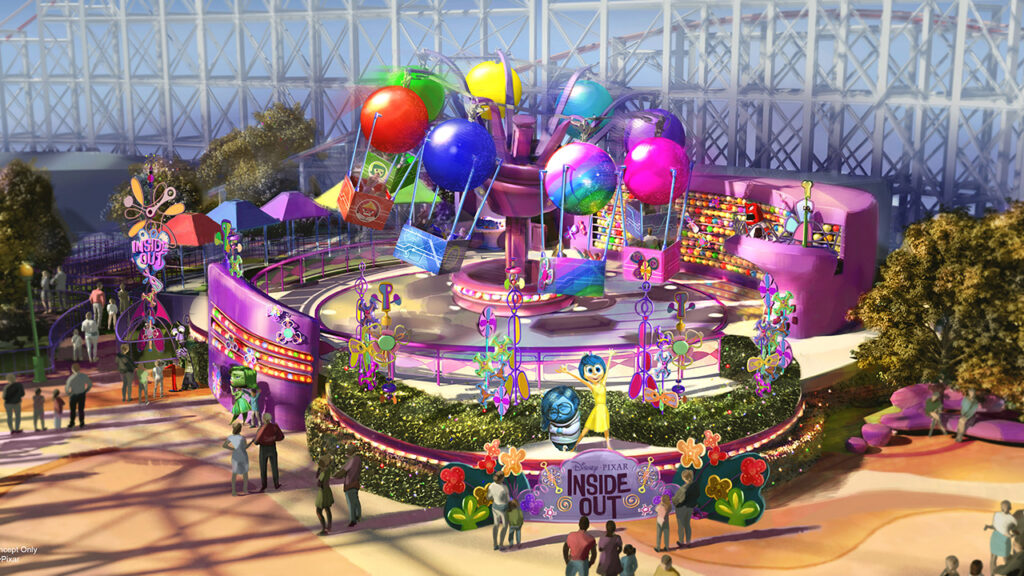
And before we blame Iger, or D’Amaro, or Chapek – or any Disney executive – for the increasing reliance on IP to inhabit Disney’s parks, we have to remember that the game has changed. Chapek is absolutely right – any other company, given Disney’s $100 billion in IP acquisitions this century – would use them!
Disney can, should, and will leverage its mind-blowing catalogue of characters, brands, and stories in its theme parks. Disney Parks will forever be places to meet Disney (+ Pixar + Marvel + Star Wars) characters and step into their stories.
Our assertion, of course, is that that shouldn’t be all that Disney Parks are…
Balance
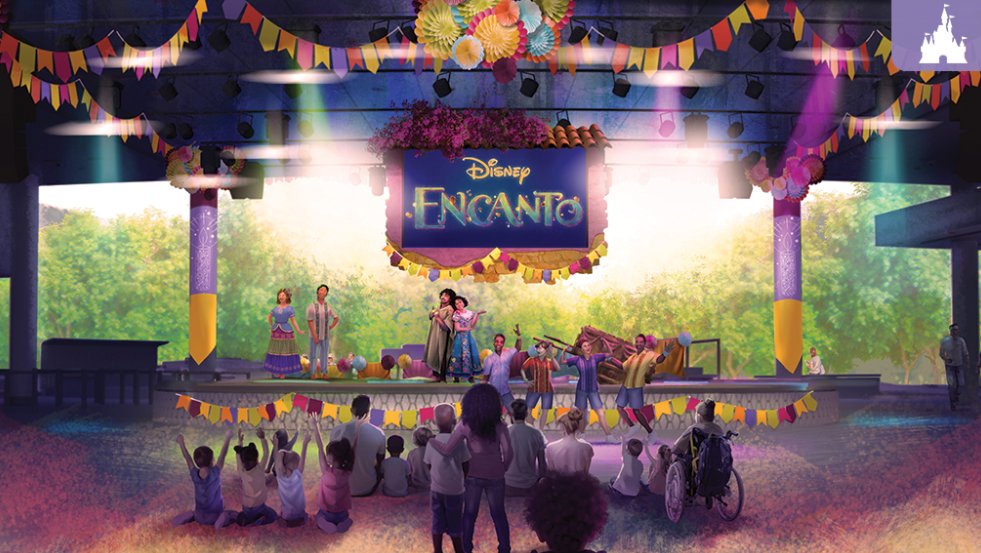
As we approach our concluding thoughts on the next page, it won’t surprise you to find that our call is for the same thing that most fans ask for: balance. Of course Disney Parks aren’t museums. But they are historic places that have been around a very long time, and will likely be around for as long and then some.
Anyone who suggests that Disney Parks ought to just “freeze” in place and time at their current states or any past state clearly hasn’t been around long. Disney Parks are defined by change, and most of the time, that change has come through intellectual property that keeps the parks relevant for new generations and fresh for the old. As long as Disney keeps producing (and acquiring) brands, characters, stories, and portfolios that matter, those brands will keep finding homes in Disney Parks.
The best we can hope for, then, is balance; balance for Imagineering between curation and creation; balance between past, present, and future; balance between that which keeps the park modern, and that which makes them timeless; and ideally, thoughtful application of Disney’s treasure trove of brand assets that meets the bar of Themes that these historic, long-lived, and deeply cared-about places deserve. Our list of “Quality Control” benchmarks for IP integration is a place to start. But in the meantime, let’s bring this diatribe to a close with a final reflection on the age of the “Disney+ Park.”


